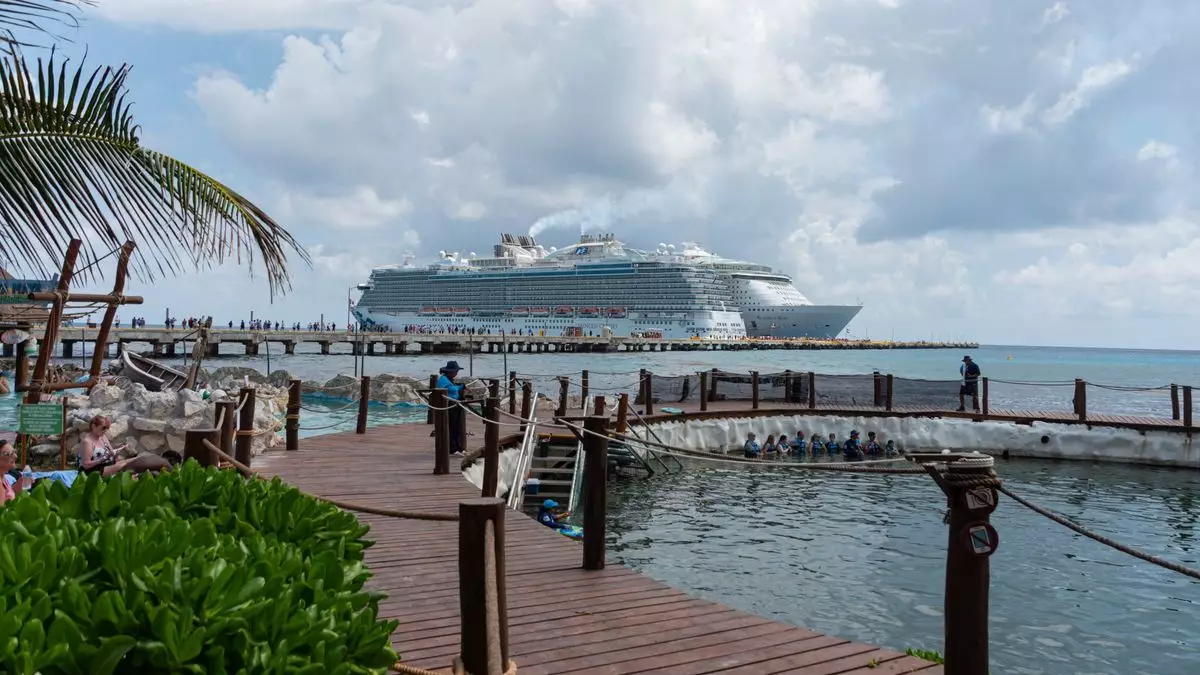The recent decision by Mexico to introduce a $42 head tax on cruise passengers has raised eyebrows across the tourism and maritime sectors. Set to take effect on January 1, the measure aims to level the playing field between land and sea arrivals. However, it poses significant questions regarding its potential impact on the cruise industry and Mexican ports, particularly in light of shifting consumer preferences and rising costs.
The introduction of this tax aligns with Mexico’s intent to establish fairness between tourists arriving by air and those arriving via cruise ships. Historically, cruise passengers enjoyed an exemption from such taxes as they were seen as transient visitors who do not utilize land facilities to the same extent as hotel guests. By removing this exemption, the Mexican government aims to bolster revenue. Notably, cruise ships contribute a considerable amount via port fees, reportedly totaling $62.6 million during the 2023-24 cruise season.
While proponents argue that this new tax is a reasonable step towards equity, critics—especially those representing the cruise industry—have voiced concerns about its potential to make cruising to Mexican ports significantly pricier. The Florida-Caribbean Cruise Association (FCCA) has calculated that with the new tax, cruising in Mexico could become 213% more expensive than visiting average Caribbean ports, effectively placing Mexico at a competitive disadvantage.
Responses from the cruise industry have been quick and vigorous. Many insiders speculate that the new tax will lead to substantial changes in cruise itineraries. Michele Paige, CEO of the FCCA, emphasized the immediate repercussions for consumer behavior and operational adaptability. Her insistence that a fee of this magnitude could deter potential cruise-goers reflects a palpable concern over how discerning travelers will perceive the added cost on top of existing vacation expenditures.
Conversely, some experts, including Andrew Leahey from Drexel University, argue that additional fees can be largely absorbed by travelers who are already committed to their vacation spending. According to Leahey, for regular cruisers, an increase from $1,800 to $1,842 is negligible—a “rounding error.” Such contrasting views highlight a divide in the interpretation of consumer sensitivity to price changes, with those in the cruise sector fearing the worst, while others anticipate only moderate impact on demand.
Tawnee Sons, co-owner of a Cruise Planners franchise, suggests that the head tax could affect overall demand for itineraries that include Mexican ports. Increasingly, travelers appear to prefer destination-based vacations, and significant hikes in taxes may lead to greater disenchantment during the booking process. The fact that taxes and fees on cruises have risen sharply in recent years—now averaging between $200 and $250—places further pressure on cruise line operators to justify their pricing to customers.
The FCCA’s warning about the tax’s potential damage, particularly in Quintana Roo (home to Mexico’s busiest cruise port, Cozumel), underscores a vital economic concern. Cruise tourism reportedly contributes significantly to the region’s GDP, and any deterrence of footfall at these popular ports could have far-reaching implications for local economies already dealing with the aftermath of pandemic-induced disruptions.
Political dynamics also weave into the fabric of this tax initiative. The timing of Mexico’s decision coinciding with President Trump’s tariff threats brings forward speculation about geopolitical influences on local revenue decisions. As Leahey points out, the tax could be a reaction to increasing bilateral tensions between the U.S. and Mexico, especially regarding border enforcement and the Mexican government’s need for supplementary funding.
While the primary purpose of the tax is to enhance state revenue, it also stands as a strategic move that may or may not have been motivated by external pressures. Regardless, the addition of this tax reinforces Mexico’s position as a player attempting to generate internal revenue streams, albeit at a potential cost to its attractiveness as a cruise destination.
While the head tax on cruise passengers presents a seemingly straightforward fiscal measure aimed at creating parity between tourist sectors in Mexico, the implications for the cruise industry are far more complex. With elements of economic strain, consumer behavior alterations, and political maneuvers entwined in this decision, stakeholders must navigate a rapidly changing landscape. Ultimately, the effectiveness of the tax will depend on how well cruise lines and Mexican authorities adapt to ensure that the allure of Mexico’s vibrant ports remains unblemished amid rising financial burdens.


Leave a Reply